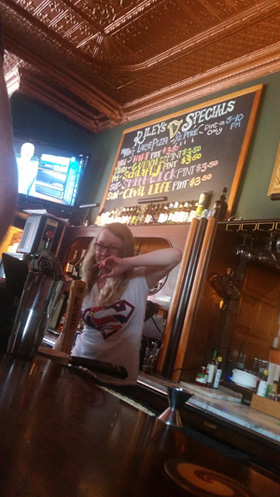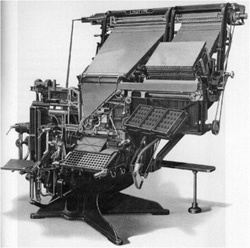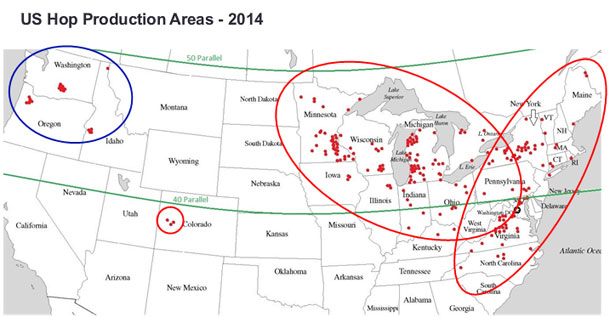 This is my contribution to this month’s Session, “Mass Observation: The Pub and The People.” Now that I have read host Boak & Bailey’s post I would give this a C-. I already knew that I would receive a lower mark because I did not anonymise (or with a z) the pub, but their report makes it clear I could have collected much more data that would be of use to a twenty-second century athropologist. They also raise the question of how the presence of an observer may affect what is being observed. For instance, there are questions I would have liked to have asked Will Gilbert, but that’s not what I was there to do.
This is my contribution to this month’s Session, “Mass Observation: The Pub and The People.” Now that I have read host Boak & Bailey’s post I would give this a C-. I already knew that I would receive a lower mark because I did not anonymise (or with a z) the pub, but their report makes it clear I could have collected much more data that would be of use to a twenty-second century athropologist. They also raise the question of how the presence of an observer may affect what is being observed. For instance, there are questions I would have liked to have asked Will Gilbert, but that’s not what I was there to do.
*****
This was not the best time to observe what might be called typical at Riley’s Pub in the Tower Grove East neighborhood of St. Louis.
During a commercial break for the Jeopardy, the TV game show everybody had come in to watch, a man found an opening at the bar and squeezed in to order two more glasses of Urban Chestnut Zwickel. “This is the busiest I’ve seen this place, like busier than the World Cup,” he said.
Urban Chestnut beers, Zwickel and STLIPA, as well as Guinness (because it was Thursday) were just $3.50 a pint, and Riley’s set out free snacks. That’s not why both rooms of the pub were full. Friends and neighbors had come to see Will Gilbert, like them a regular at Riley’s, compete on Jeopardy. Of course he was at the party, because the show is taped in advance.
 At 4:15, 15 minutes before the program would start, there were still seats at the bar. They quickly disappeared by the time the bartender poured a Zwickel, a Zwickel, a Harp, another Zwickel, opened the Guinness tap, slid a can of 4 Hands City Wide across the bar and filled two glasses of water before returning finish the Guinness pour.
At 4:15, 15 minutes before the program would start, there were still seats at the bar. They quickly disappeared by the time the bartender poured a Zwickel, a Zwickel, a Harp, another Zwickel, opened the Guinness tap, slid a can of 4 Hands City Wide across the bar and filled two glasses of water before returning finish the Guinness pour.
“Do you know Will?” one man asked as they made their way toward the less crowded second room. “I’ve played trivia with him,” said the second.
Sometimes trivia means the same thing in St. Louis as in most cities — something bars offers on a week night to attract customers. But St. Louis also has a unique trivia culture, found in churches on Saturday night (and beer is welcome). So it was a big deal when Gilbert landed a spot on Jeopardy.
Although Riley’s is sometimes grouped with other “Irish pubs” (like seemingly everywhere, St. Louis has plenty), I’d simply call it a neighborhood tavern. It’s the only commercial establishment in the immediate neighborhood. It’s the kind of place that holds fundraisers for the local high school and invites customers to sit quietly during televised political debates.
Last Thursday the draft choices were Civil Life American Brown, Civil Life Rye Pale Ale, Guinness, Smithwicks, Harp, UCBC STLIPA, UCBC Zwickel, and Schlafly Pale Ale. They don’t change very often.
When Gilbert’s picture appeared on the screen (there were two televisions in the bar area, another in the adjoining room) at 4:24 a cheer went up. The place went silent when the competition began, but low level conversations returned quickly enough. Mostly cheers followed, sometimes when he got an answer right, other times when one of his competitors got one wrong. Once in a while a chant — “Will! Will! Will!” — broke out. Wearing a T-shirt decorated with a St. Louis city flag and holding an Urban Chestnut ceramic mug Gilbert settled at one end of the bar, a step outside most of the madness.
He commented occasionally, without raising his voice, like any other afternoon when he and friends were watching the show, as they do often at Riley’s.
“This is the one, Patrick. It is your fault I didn’t know this.”
“I knew this one. I was pissed.”
He led going into Final Jeopardy (for those unfamiliar with Jeopardy, this is how it works), but got the final answer wrong. It took a moment for his friends to understood what he knew long ago. “Will! Will! Will!” they chanted, then applauded long and hard.
In the 45 minutes between the time I got a seat at the bar and Jeopardy ended I saw the bartender, sometimes with a bit of help, pour 18 glasses of Zwickel. Perhaps the price was a factor, but it was also a Zwickel sort of day, the temperature hitting 97 degrees and the heat index topping 100. She drew five glasses of Guinness, two of Schlafly Pale (plus a pitcher), two Civil Life Browns and two Rye Pale Ales, one UCBC STLIPA, and one Harp. She also handed out six bottles of Stag, three cans of City Wide, one bottle of wine (chilled in a Bud Light bucket) and one single glass, and mixed (about) six drinks made with spirits.
 Maybe I should have asked this question earlier, given that
Maybe I should have asked this question earlier, given that 